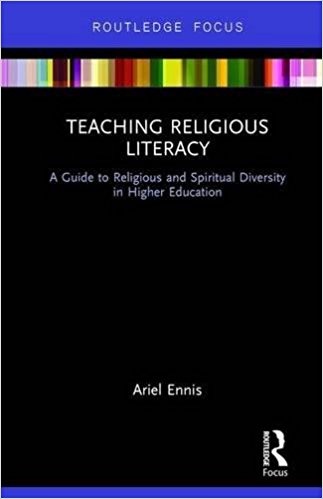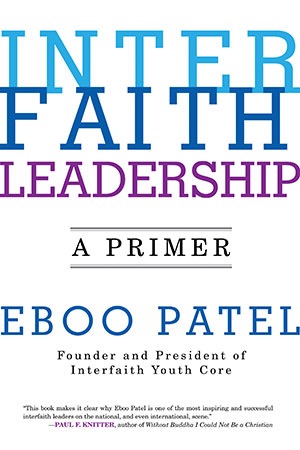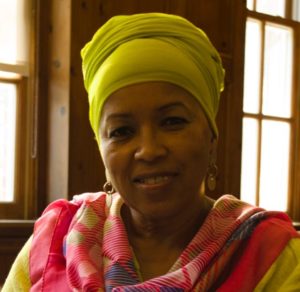inter-religious
Select an item by clicking its checkbox

Teaching Religious Literacy: A Guide to Religious and Spiritual Diversity in Higher Education
Date Reviewed: October 1, 2018
Ariel Ennis, Assistant Director and Senior Multifaith Educator at the Of Many Institute for Multifaith Leadership in the Office of Global Spiritual Life at New York University, has authored an important contribution to a burgeoning literature on campus-based interfaith and interreligious outreach. Noting that diversity and inclusion initiatives on American campuses frequently address race, sexuality, and gender while ignoring religious identity, Ennis reports on efforts at NYU to create a center to support spiritual life. Special attention is given to the development of a “Faith Zone” curriculum that trains leaders for enhanced multifaith encounters.
Ennis analyzes a variety of extant approaches to cross-cultural religious and spiritual experiences, looking at intended outcomes of different programs. Focusing on the concept of “religious literacy,” he describes a framework for the NYU workshops on spiritual diversity that supports religious literacy initiatives. Included in the book is the Faith Zone curriculum and rubrics drawn from the AACU (Association of American Colleges and Universities) VALUE rubrics that are used for post-workshop outcomes assessment. He shares data from these assessments in order to demonstrate the impact on campus of the religious literacy curriculum. The book closes with the author’s reflections on how Faith Zone workshops could be offered on different types of campuses (public/private, religious/secular) and with his recommendations for successfully meeting challenges emerging from the workshops.
Campus religious literacy initiatives that Ennis advocates embrace the question: Can we teach people to have more productive conversations about religion and spirituality in diverse settings? Using the definition of religious literacy developed by Dianne Moore of the Religious Literacy Project at Harvard Divinity School, Ennis answers this question affirmatively, setting four outcomes for the interfaith curriculum. Workshops will (1) enhance participants’ knowledge of historic and contemporary interconnections of religion with cultural, political, and social life; (2) embrace an ecumenical orientation that offers participants firsthand experience in exploring religio-cultural boundaries; (3) promote self-awareness about the intersections of participants\' religio-spiritual identities with larger social forces; and (4) encourage participants\' commitment to apply their new found religious literacy through practical projects that bridge intercultural divides.
In contrast to Eboo Patel’s portrait of a fraught relationship between interfaith outreach and religious studies programs (https://www.wabashcenter.wabash.edu/scholarship/interfaith-leadership-a-primer/), Ennis’ book points to positive implications for partnerships on campus between religious studies programs and interfaith outreach. Similarities between Faith Zone outcomes and learning outcomes/assessment of the religion major on many campuses suggest productive cross-fertilization. Students could sustain the long-term impact of the workshop outcomes, adding depth and breadth, through coursework in religious studies grounded in similar learning outcomes. In complementary fashion, religious studies majors could apply learning in the major outside the classroom, enhancing their resumes, through interfaith internships: as graduates of Faith Zone training, they could lead workshops on religious literacy and develop and lead associated campus programming.

Interfaith Leadership: A Primer
Date Reviewed: August 11, 2017
To date, one thousand colleges and universities have engaged the Interfaith Youth Core (IFYC) to catalyze interfaith cooperation, educate interfaith leaders, and build knowledge of faith traditions. Authored by the founder of IFYC, Interfaith Leadership contributes to a key IFYC goal: to train seven thousand interfaith leaders by 2020.
Sharing his journey to interfaith leadership (Chapter 1), Patel discusses his theory of interfaith understanding (Chapters 2-3), shares his leadership vision (Chapter 4), and identifies leaders’ knowledge, skills, and personal qualities (Chapters 5-7). “Inter” in “interfaith” references “interaction between people who orient around religion differently”; “faith” stands for “how people relate to their religious and ethical traditions.” With the term interfaith, Patel highlights reciprocal influences: interactions with others impact how we relate to “our” religious and ethical traditions as well as to “theirs.” Interfaith leaders guide persons across a “landscape of religious diversity” toward “interfaith cooperation.”
Can religious studies programs play a role in campus interfaith leadership training? Patel’s understanding of religious studies is informed by Wilfred Cantwell Smith. As Patel understands Smith, the academic study of religion errs because it looks at “systems” divorced from religious practice. For Patel, “religious system” means faith viewed through a religious studies lens. By contrast, interfaith explorations engage personal practices.
Patel identifies two potential models of interfaith leadership: Stephen Prothero and Karen Armstrong. While Prothero focuses on systems (doctrines, texts, and rituals), neglecting the diversity and specificity of lived faith, Armstrong attends to “human-heartedness,” generalizing about spiritual traditions in ways that make these traditions unrecognizable to their adherents. Interfaith leaders, by contrast, support embedded dialogue. Patel illustrates: when the lone Muslim student in a world religions class declares he has never before heard the terms “Shia” and “Sunni,” his professor’s “abstract” approach to Islam is shown irrelevant to other students’ who comprehend “real world” Muslim faith.
Eschewing “deficits, problems, and ugliness,” interfaith perspectives “appreciate” the “beautiful, life-giving, and admirable” in religion, building relationships through story-telling. For example, Patel attributes changes in the US between 1928 and 1955 in attitudes about Jews to the NCCJ (originally the National Conference of Christians and Jews. It currently refers to the National Conference for Community and Justice), an interfaith entity, not to the scholarly study of anti-Semitism. Patel also highlights a case study. Doctors trained in Western medicine identify symptoms of epilepsy in a Hmong child. Her parents, believing she is becoming a shaman, do not comply with treatment plans. A seizure puts the child in a vegetative state. Patel ponders whether an “appreciative understanding” of Hmong faith by the doctors could have led to a different outcome.
IFYC does valuable work on campuses, promoting conversations about religion that make it safer for students of diverse traditions to express faith without fear. On some campuses, religious studies departments have been included in IFYC initiatives. However, participants in campus IFYC initiatives whose knowledge of the academic study of religion is drawn only from Interfaith Leadership will benefit from outreach by religious studies faculty. We can foster an informed understanding of our field as a vital resource for students seeking the knowledge, skills, and personal qualities needed by leaders in a religiously diverse world.
What’s a Catholic College? I grew up agnostic and converted to Islam when I was eighteen. A lifetime later, I now teach at a Catholic, Jesuit, liberal arts college. Like many religious studies educators, I continue to mull over questions about the intersections of identity, metaphysics, and socio-politics. So, ...
Lack of awareness about what Islam is and how its followers are religiously motivated to act, coupled with heightened tensions during the 2016 presidential campaign about the patriotism of American Muslims, led me to offer “Arabs and Muslims in the Media” as a first-time offering this semester. The twenty-one students who ...

Teaching Across Cultural Strengths: A Guide to Balancing Integrated and Individuated Cultural Frameworks in College Teaching
Date Reviewed: November 30, -0001
Teaching Across Cultural Strengths is a guide for faculty seeking to apply a cultural lens to their teaching practice; the goal is to learn how to “draw from the cultural strengths of all peoples in service toward equitable and effective teaching and learning” (xx). Chávez and Longerbeam adopt a complex definition of culture visualized in successive layers: artifacts and behaviors, beliefs, values, norms, and underlying assumptions (71). A central thesis is that university teaching in the United States follows an Oxford or Germanic model that has not adequately served students of color. The authors describe a dissonance between an individuated cultural framework characterized by private, compartmentalized, and linear learning and an integrated cultural framework characterized by mutual, cyclical, and contextually-dependent learning. The intent is not to favor one cultural approach over another but to stress the strengths and potential rewards of pedagogy combining a wider array of cultural norms.
Based on research and faculty development conducted in Arizona and New Mexico, the book emphasizes Native and Hispano/Latino American students (12). Faculty interested in how their teaching is responsive to religious diversity in the classroom will find more than enough tools for reflection in this volume but only a small number of direct examples. The teaching of evolution in the biology classroom is mentioned as an example of potential incongruence between course content and student beliefs. Immediately following this case is the fascinating story of accommodations made for a medical student who dropped out due to a spiritual injunction against handling human remains (154-55).
In their first chapter, the authors introduce their data-supported Cultural Frameworks in Teaching and Learning Model with activities and vignettes meant to help the reader transform their own pedagogy. This chapter has a workbook feel with four graphics in the first eight pages. The second chapter, “Culture in College Teaching,” offers a more readable treatment of the basic principles of the book and I would advise reading it first. The next three chapters offer extended explanations of how to implement culturally balanced teaching supported by a large number of classroom narratives. The sixth chapter is particularly useful since it is organized as “The Top 10 Things Faculty Can Do to Teach Across Cultures.” The final two chapters discuss the authors’ own work in faculty development and how others might initiate similar projects. The book contains a helpful index and two appendices: one describing how to create a “culture and teaching autobiography” and a second containing a short list of books for further learning.
When I was in grade school, “Choose Your Own Adventure” books were all the rage. These titles were formatted in a way that let the reader jump around in the text to create her own story. In Teaching Across Cultural Strengths, Chávez and Longerbeam capture a similar spirit by arranging advice, questions, and activity prompts so that faculty can create their own workshop experience either individually or as a group. No one can be a perfect teacher but we are all called to be reflective teachers. In form and content, this book can be a useful asset on that journey and it is highly recommended.

